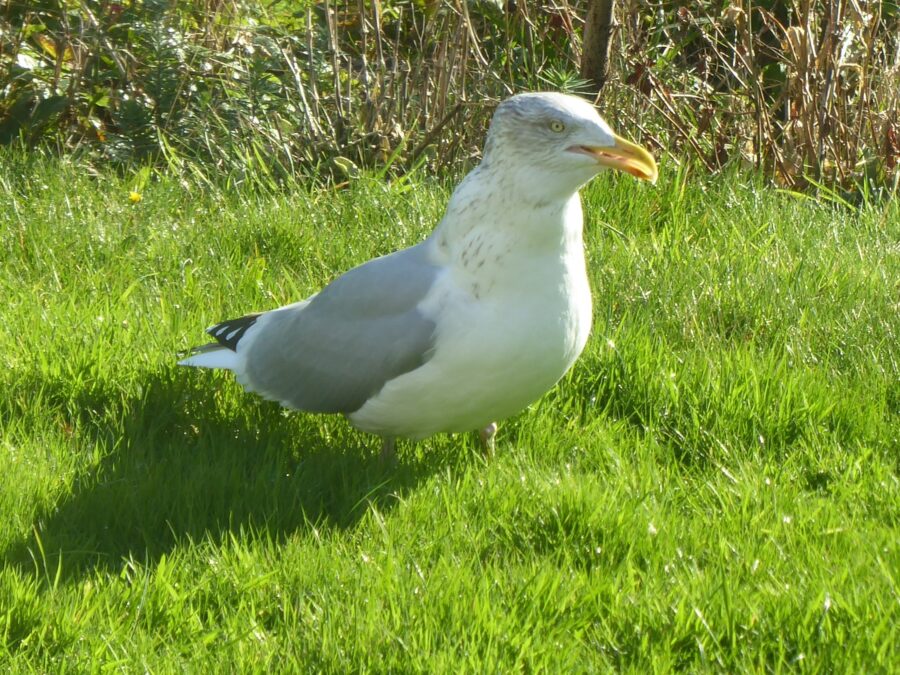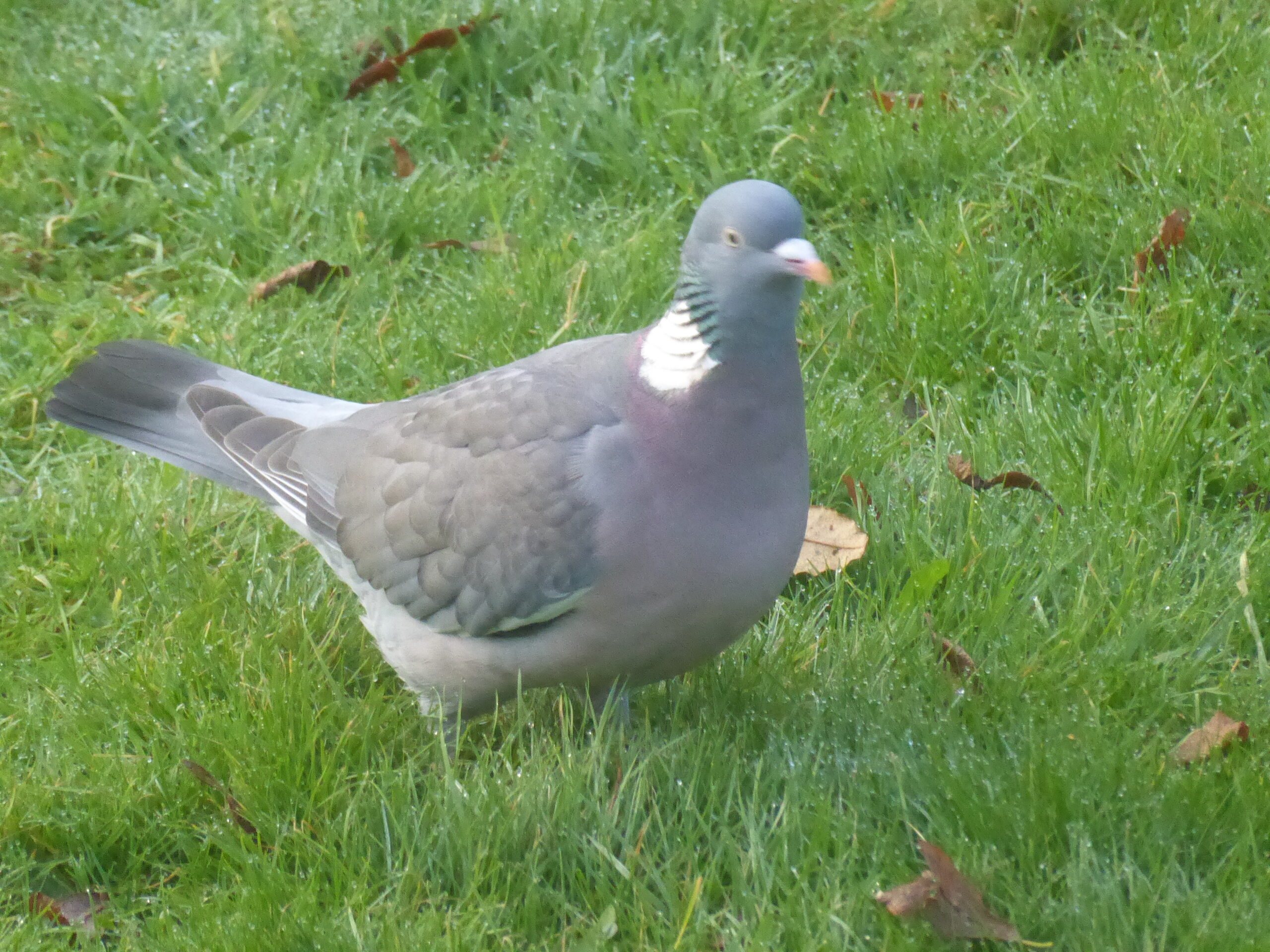Wood pigeons and herring gulls fly up and down the valley in completely different styles. Whereas the gulls go scavenging morning and evening, sweeping, circling, and scanning the valley for titbits; the wood pigeons fly purposefully in straight lines, but with much flapping, as though they are late for a meeting.
On the ground, the wood pigeon is cautious and will circle its dinner many times before committing to a delicate peck. We know the gull has no such inhibitions!
Wood pigeons eat leafy crops, grain, seeds, shoots, buds, and berries. At the moment, it is likely to be visiting to eat the ivy berries.
Herring gulls on the other hand include fish, crustaceans, carrion, and human food in their diet. Like the wood pigeon it can be found in a variety of habitats, but while the pigeon prefers parks, gardens and farmland, the herring gull will also frequent cliffs, wetlands, and landfill sites.
The wood pigeon can be identified from other pigeons primarily by its white collar and purple-flushed breast.
The herring gull has grey wings with white-spotted black tips, and a characteristic red spot on its lower beak. The reason for the red spot is for the chicks to peck at to encourage the parent to regurgitate food for them.
This one has a mottled head, so I wondered whether it was still a juvenile, but I found out that herring gulls have a mottled head pattern in the winter.

